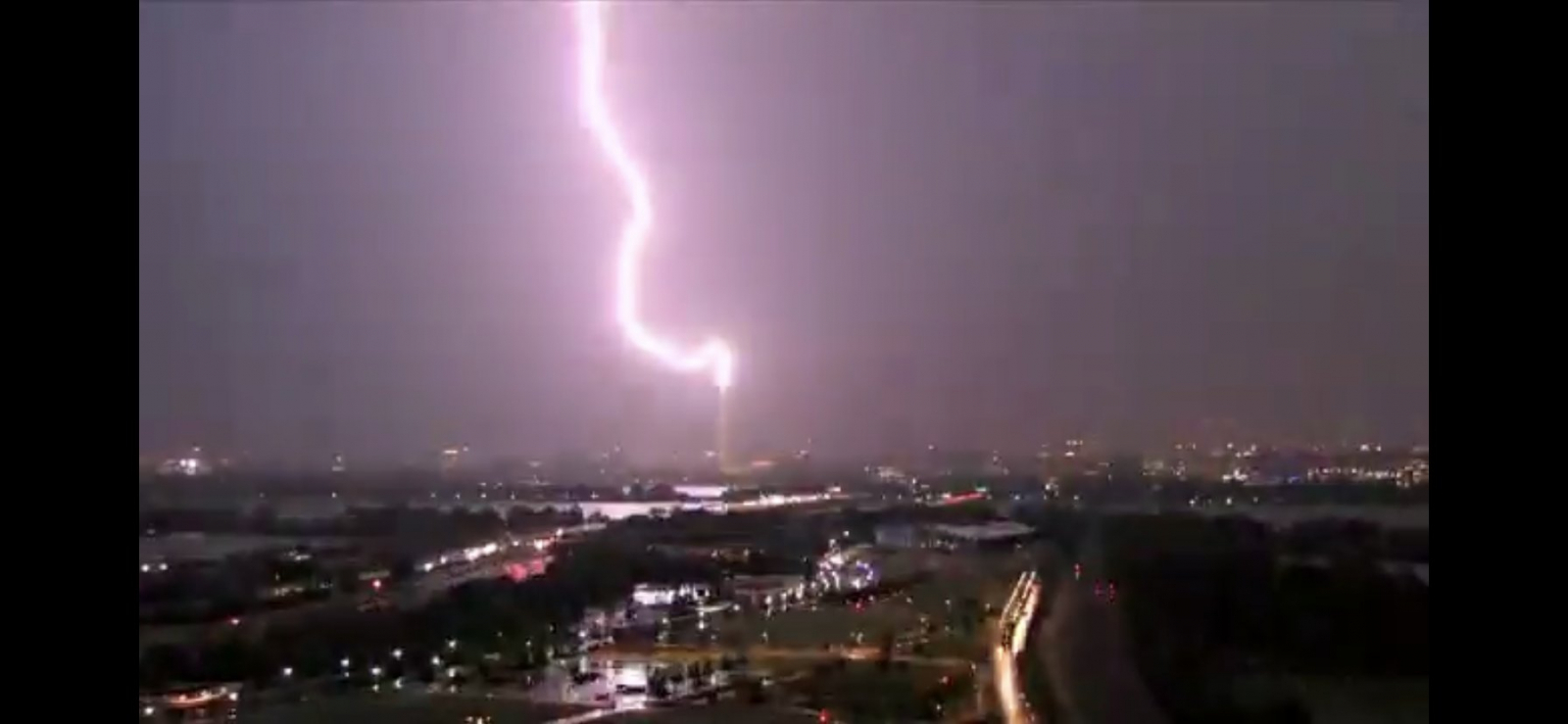
National Severe Storms Laboratory Collection, NOAA Photo Library. View is from behind storms during early stages of development. In April 1885, five lightning bolts struck the Washington Monument during a thunderstorm, yet no thunder was heard.īuilding line of cumulonimbus thunderstorms.
LIGHTNING STRIKES WASHINGTON MONUMENT SERIES
The shock waves from the different forks of lightning bounce off each other, the low hanging clouds, and nearby hills to create a series of lower, continuous grumbles of thunder. However, if a lightning bolt is forked, the sounds change. Vertical lightning is often heard in one long rumble. The shock waves nearer to the ground reach your ear first, followed by the crashing of the shock waves from higher up. Prints & Photographs Division, Library of Congress.īecause electricity follows the shortest route, most lightning bolts are close to vertical. Route 66 in the Texas panhandle. Carol M. A massive cloud presages a thunderstorm above Groom, a tiny community along old U.S. The result is a shock wave, with a loud, booming burst of noise sent in every direction. As the heated air expands, the pressure drops, the air cools, and it contracts. Under such pressure, the heated air explodes outward from the channel, compressing the surrounding air.


The rapid rise in temperature creates a rapid increase in the air pressure as well, rising to 10 to 100 times the normal atmospheric pressure. The heat from the electricity of this return stroke raises the temperature of the surrounding air to around 27,000 C° (48,632 F°). However, the grumbles and growls we hear in thunderstorms actually come from the rapid expansion of the air surrounding the lightning bolt.Īs lightning connects to the ground from the clouds, a second stroke of lightning will return from the ground to the clouds, following the same channel as the first strike. The loud thunder that follows the lightning bolt is commonly said to come from the bolt itself. NOAA Photo Library.įrom the clouds to a nearby tree or roof, a lightning bolt takes only a few thousandths of a second to split through the air.

Pete Gregoire, photographer, NOAA Weather in Focus Photo Contest 2015. Monsoon storm producing a forked lightning bolt from the Red Hills Visitors Center at Saguaro National Park in Arizona. Thunder is caused by the rapid expansion of the air surrounding the path of a lightning bolt.


 0 kommentar(er)
0 kommentar(er)
